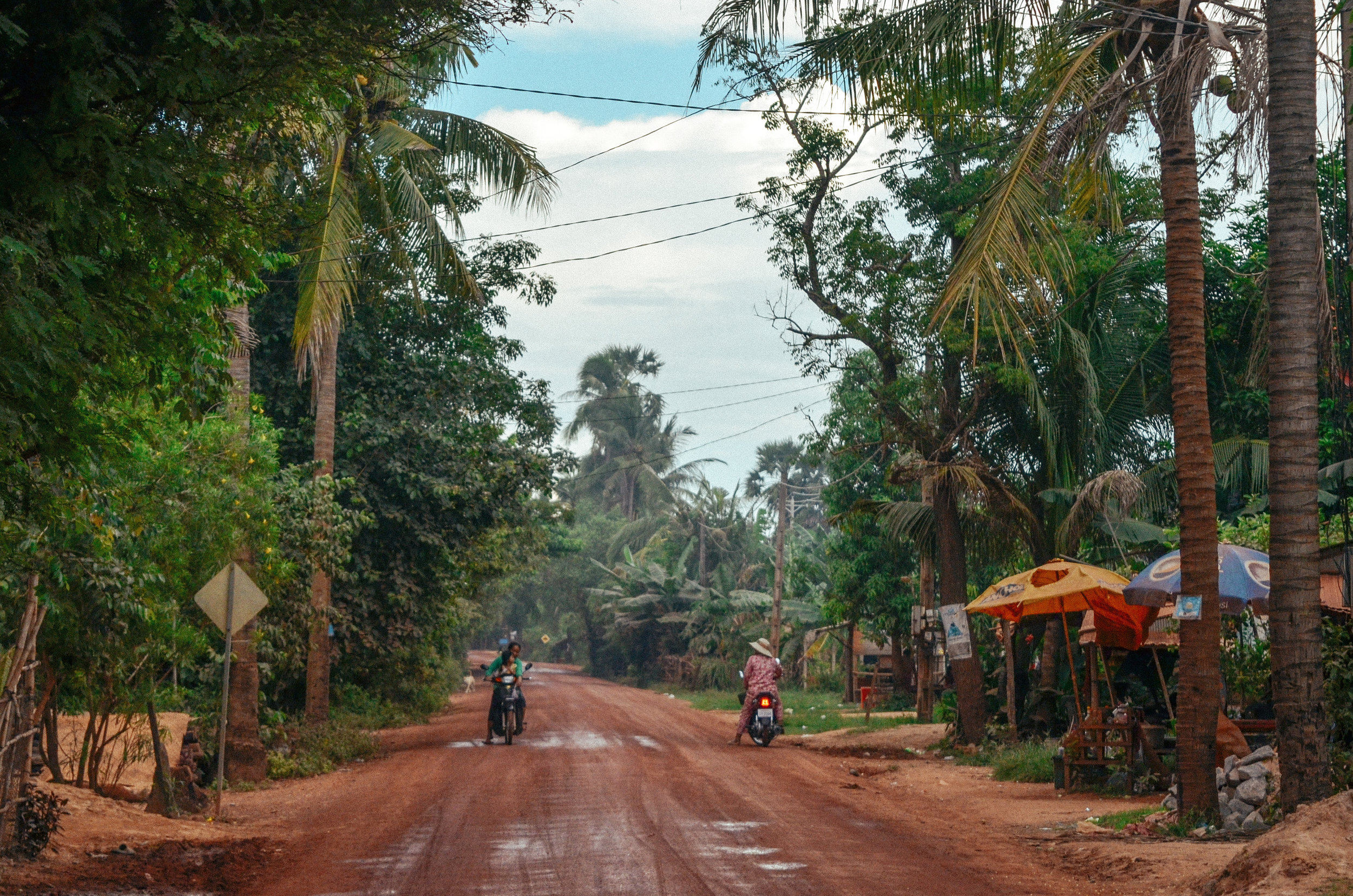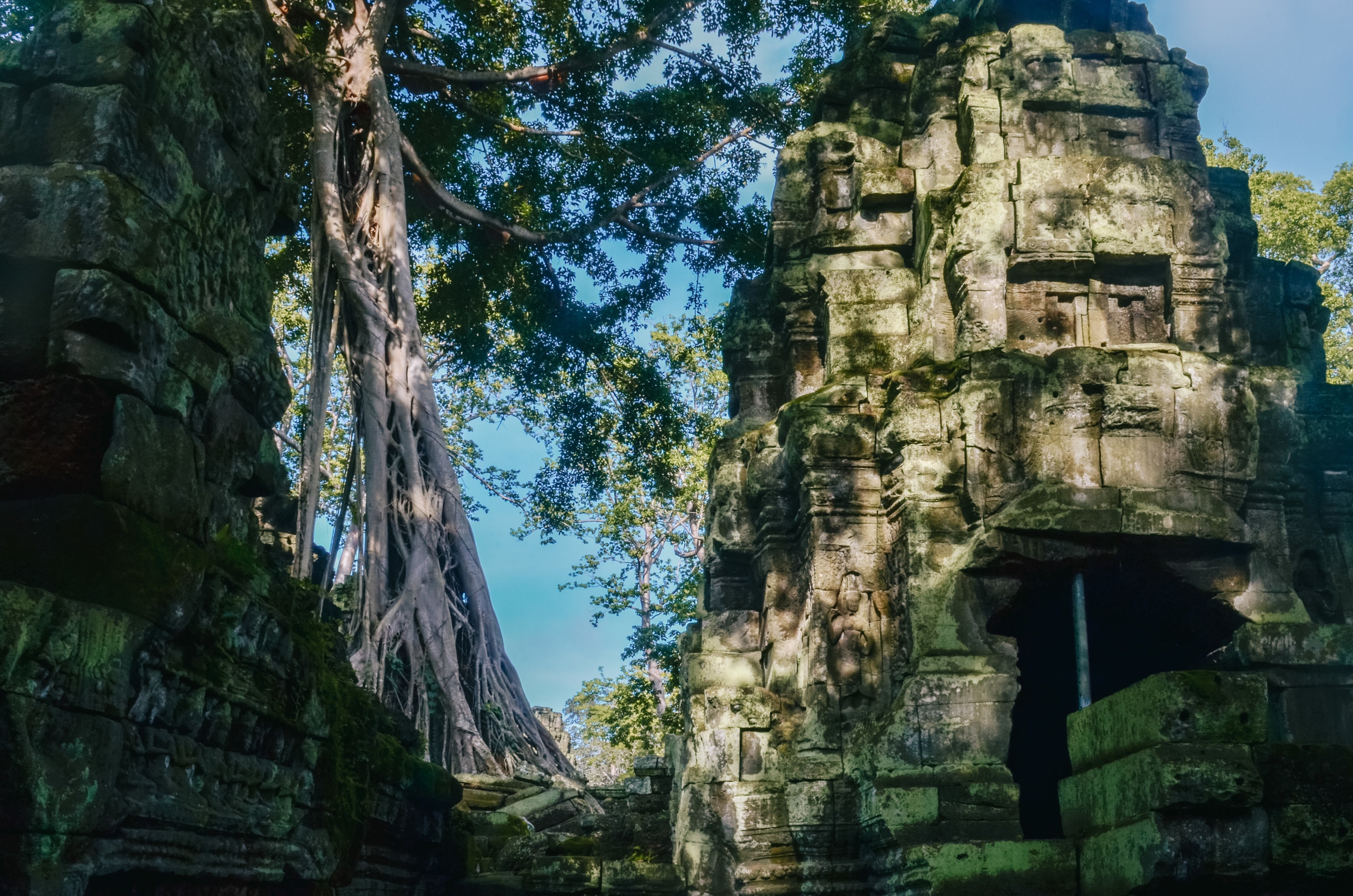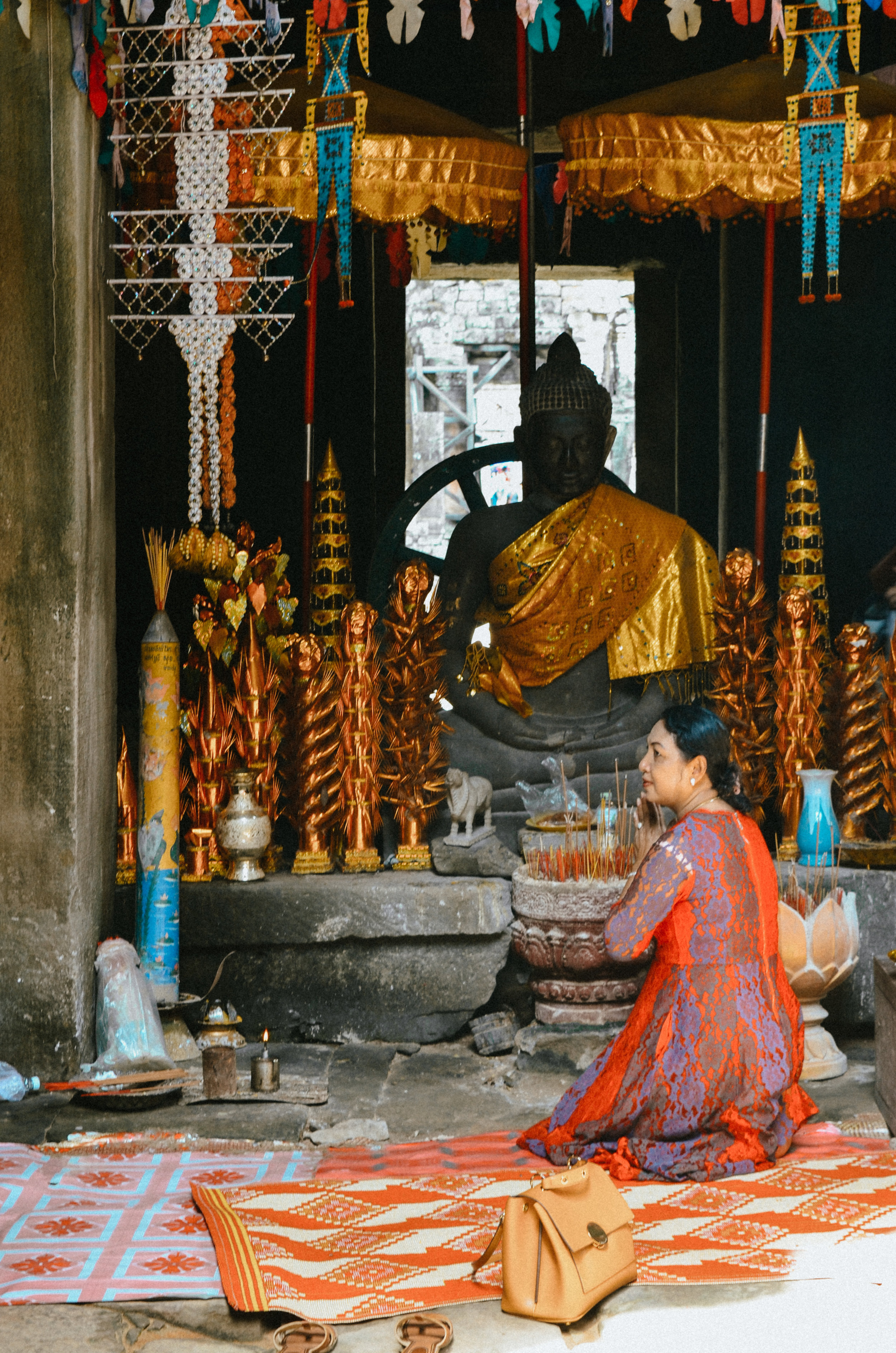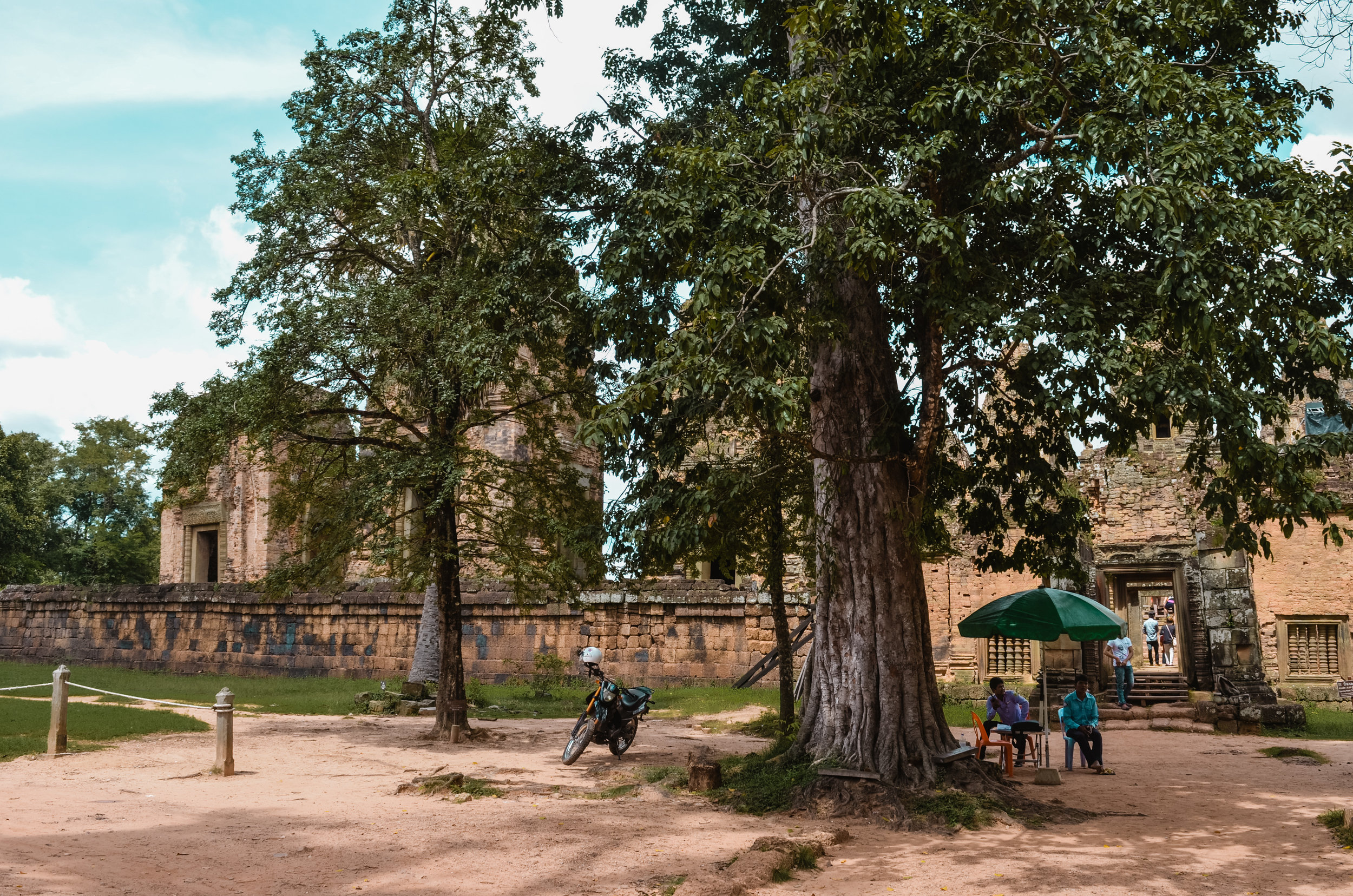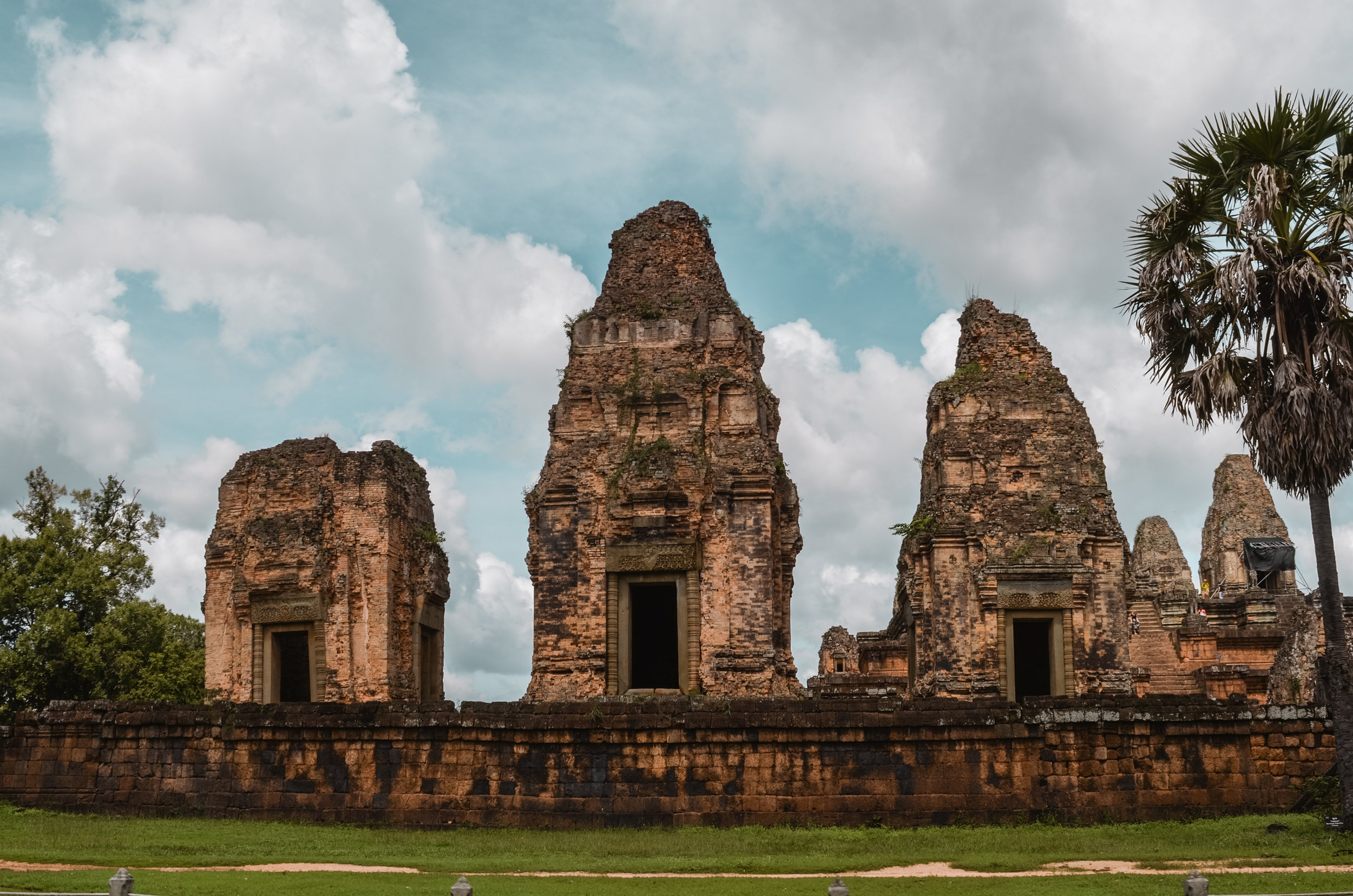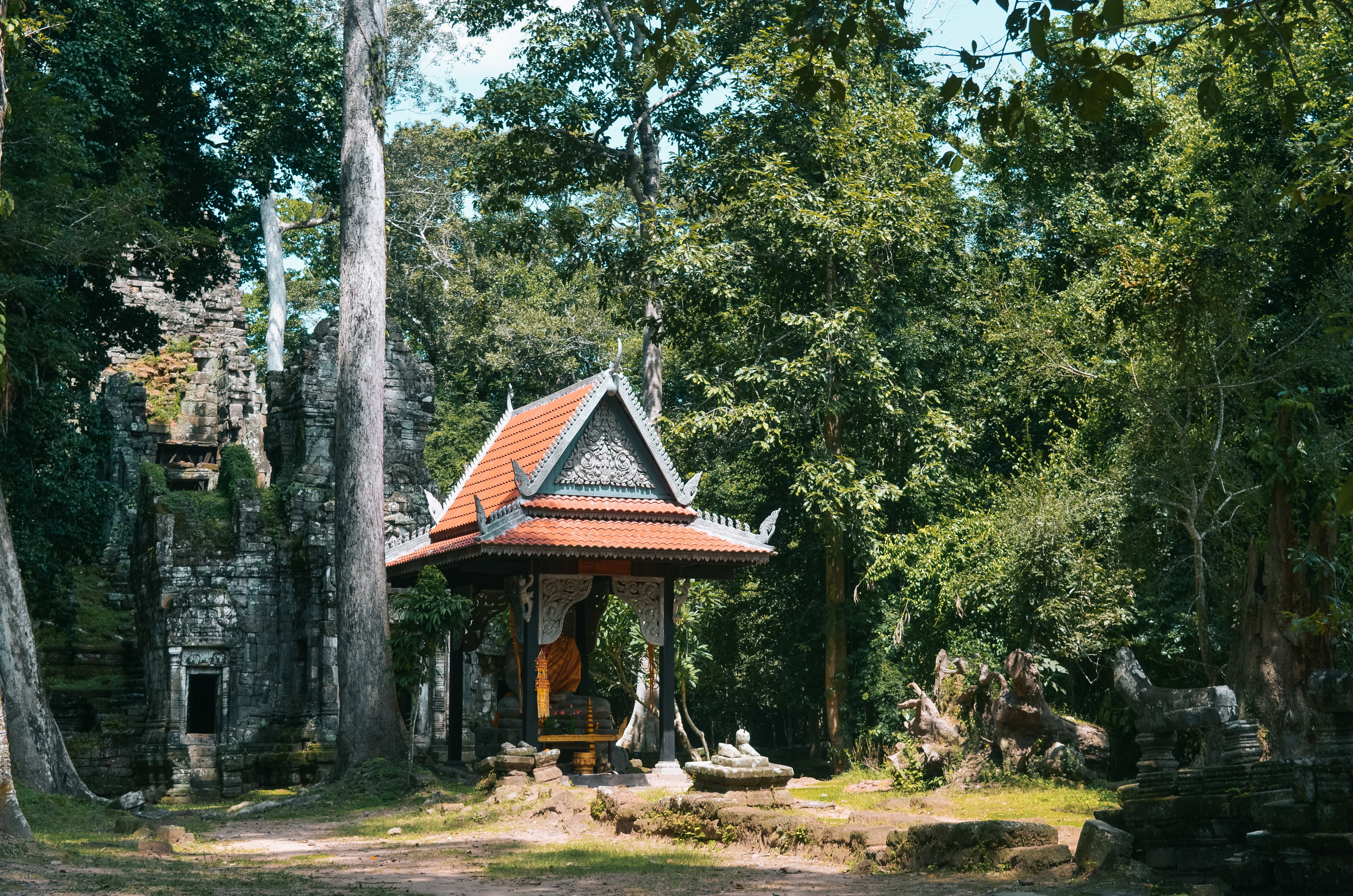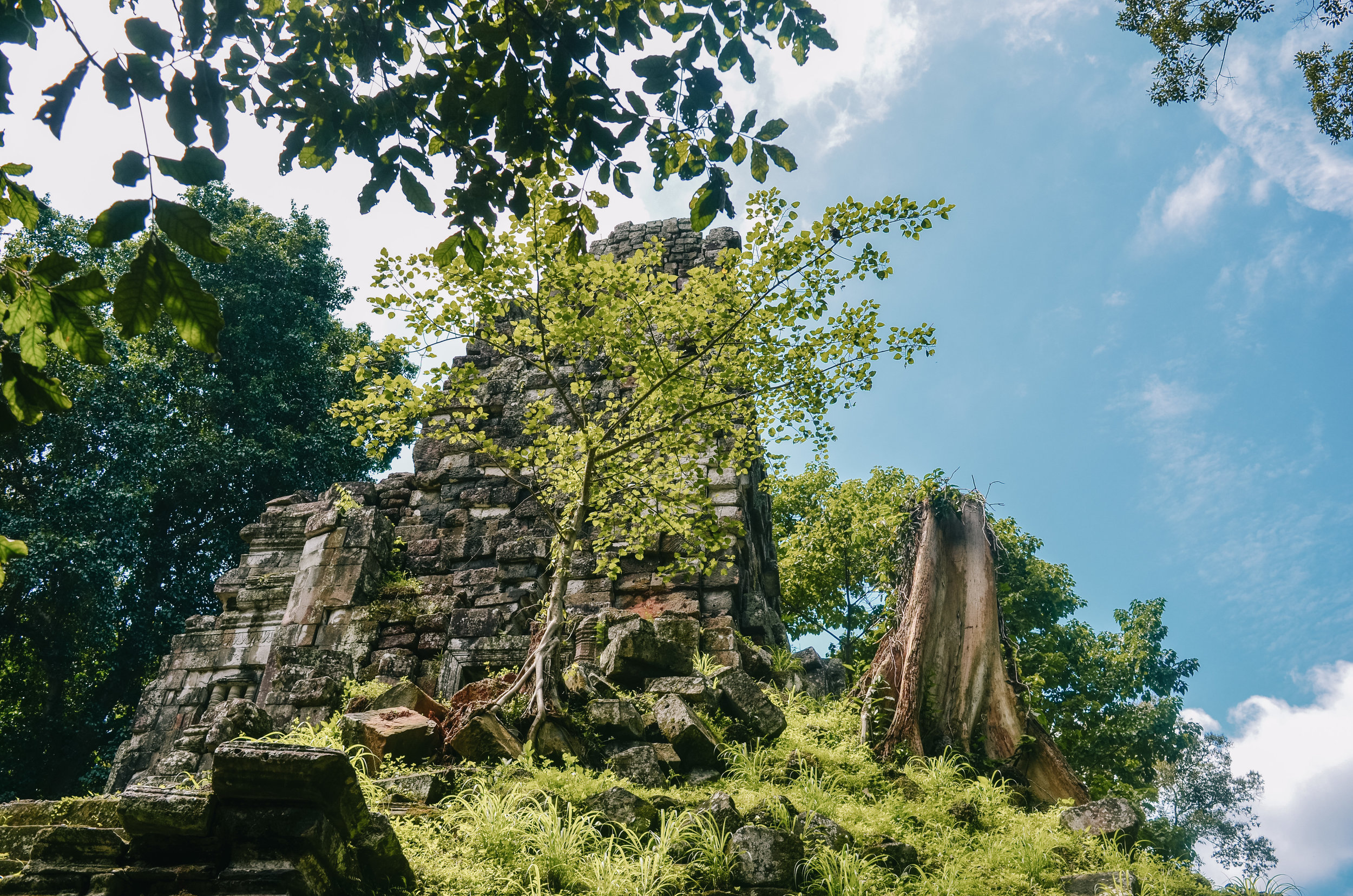Cambodia (Siem Reap and Angkor)
Day 11 and 12 Siem Reap (01/02 September)
Cambodia was the next destination of our trip. After arriving at Siem Reap airport, we were picked up by a tuk-tuk that our hotel had provided. The hotel we chose was the Central Indochine D’angkor. Upon arrival, the kind staff welcomed us in what was going to be our paradise home for the next days. Both the hotel and our rooms were super nice, comfortable and clean. For lunch we went to a Thai place nearby our hotel and then went to visit the old market of Siem Reap. Maybe is good to know that in Cambodia the currencies are Cambodian riel and US dollar. Given that they use dollars, Cambodia is not as cheap as expected, especially in tourist areas like Siem Reap.
For the next day we organised a tour to Kampong Phluk (Floating Village). The village is relatively far from Siem Reap and the cost of the travel, plus the entrance fee to the village costed approximately $40. Both the travel and the visit of the village gave us the opportunity to explore a less crowded and more rural area of Cambodia. Wandering around a floating village was undoubtedly a new experience for us. It was fascinating to see how the people living in the floating villages of the Tonlé Sap, adapt their lives and daily routines to the exigencies of nature. Schools, restaurants, public spaces, everything was floating, kids playing between boats and floating platforms, it was surreal. When in the village, we were asked to pay an extra fee to go in a smaller boat to visit a pluvial forest nearby.
During this smaller route, we were asked to buy food or objects to donate to one of the kids strategically placed on each of the smaller boats. Sadly, what we mistakenly decided to buy, pressured by the uncomfortable situation we found ourselves in, was returned to the seller once the round terminated; and the kid never saw nor touched the ‘presents’ bought for him. This obviously frustrated our experience but more importantly, it made us understand the cruelty that lies behind the phenomenon of ‘misery tourism’ which has lead to a wide exploitation of children and local communities throughout the country. It’s reported that 75% of the exploited children are lured away from their families with promises that they will receive free education and food by pretending to be orphans. The main goal is to get donations from tourists. Besides the fact that the money is obtained out of lies and scams, the worse part is that the promises are never fulfilled, neither for the kids or their families. In reality, most of the donations go to the owners of the orphanages. The New York Times completed a small reportage on this exact reality (video). We were aware of most of these situations, and ultimately we had never wished to be part of it ourselves. When travelling, we have always tried to not engage in invasive and disruptive tourism, trying to plan our visits consciously and sustainably. I believe visiting floating villages can and must support the local communities, I am glad we did it and I am happy to have discovered for a brief moment such a different way of living. But, I am also aware that one must properly inform himself/herself to avoid causing further damages to these vulnerable and exploited communities.
Day 13 ANGKOR (03 September 2017)
This day marked the beginning of our journey around Angkor. We arranged with our previous tuk-tuk driver, Hai, to take us around the site for the next 3 days and together with him, my boyfriend made a meticulous plan, ensuring we would not miss anything.
A bit of background history is crucial! We also had our Lonely Planet always with us to help along the way.
“Angkor is one of the most important archaeological sites in South-East Asia. Stretching over 400 km2, including forested area. The city of Angkor served as the royal centre to a dynasty of Khmer kings, in which they ruled one of the largest, most prosperous, and most sophisticated kingdoms in the history of Southeast Asia, from the 9th to the 15th century. During this entire period, these rulers utilised the vast resources of labour and wealth at their disposal to carry out a series of prodigious construction projects designed to glorify both themselves, their gods, and the capital city. It was a megacity supporting at least 0.1% of the global population during 1010–1220.
In 2007, an international team of researchers using satellite photographs concluded that Angkor had been the largest pre-industrial city in the world, with an elaborate infrastructure system connecting an urban sprawl of at least 1,000 square kilometres to the well-known temples at its core. National Geographic says that Angkor is as much about water as it is about stone—the site boasts an enormous system of artificial canals, dykes, and reservoirs. Although the size of its population remains a topic of research and debate, newly identified agricultural systems in the Angkor area may have supported up to one million people.
The city was planned and constructed on the basis of religious and political conceptions imported from India and adapted to local traditions. After the armies of the Tai state of Ayutthaya (Ayudhia) captured and sacked Angkor in 1431, the city was partially abandoned.
© Fosca Raia
The first Western to see Angkor Wat was Antonio da Madalena, a Portuguese friar, who visited in 1586. However, it was Henri Mouhot, a French explorer, that helped to bring Angkor Wat to fame in the West by publishing an account of his visit in the mid-19th century. Nevertheless, it remained cloaked by the forest until the end of the 19th century. Eventually, from 1907 to 1970, French archaeologists began to work on the site, under the direction of the École française d'Extrême-Orient, which cleared away the forest, repaired foundations, and installed drains to protect the buildings from water damage. Since 1993, conservation of the site has been jointly co-ordinated by India, Germany, Japan, UNESCO and Cambodia.
Many visitors mistaken the size of Angkor and visit only a few of the most famous temples. There were many changes in architecture and artistic style at Angkor, and there was a religious movement from the Hindu cult of the god Shiva to Vishnu and then to a Mahayana Buddhist cult devoted to the bodhisattva Avalokiteshvara.”
Disclaimer: This summary of Angkor was created combining various information found online. Some of the sources include UNESCO, National Geographic, Wikipedia. The combined text is meant to be purely a source of background history regarding the city of Angkor.
The sunrise in Angkor is part of many bucket lists, and to experience ours we were advised by Hai to go to Srah Srang. We woke up at night and after a tuk-tuk trip, we arrived at the destination, puzzled by the complete darkness. We began to see the first signs of light on the lake and only later realised that we were in the temple itself. We were the only tourists there, and although it was not a sunrise over Angkor Wat, it was still a beautiful experience, that only, later on, I appreciated more.
First stop after the sunrise was Prae Roup. During the early morning, tourists rush to the most “important” temples, leaving the other ones free for a quiet visit. The sun was slowly rising when we entered the temple; it was also guarded by a sleeping dog which proved that we were the first ones to enter in that morning. We slowly explored and read about it. I was extremely lucky to share this experience with people who appreciate art, culture and history.
Ta Phrom, served as the filming location for the movie Tomb Raider, what probably made it even more popular among tourists. It was built in the Bayon style in the late 12th and early 13th centuries and originally called Rajavihara. Ta Prohm is probably the temple that most lives to scenery idea of the city eaten by the jungle. Unlike most Angkorian temples, Ta Prohm is in much the same condition in which it was found. Undoubtedly is one of the most photogenic and impressive views of the ruins of Angkor. The temple nowadays features breathtaking old trees in unusual shapes and sizes, that embrace the ancient temple. It is a huge temple where you can easily get lost but it is worth to take all the time you need to see it entirely.
Banteay Kdey was somehow resembling the previous temple. However, in each of them, you discover new details or structural aspects that make you want to discover more and more. Also, each person experiences things differently, how can you know which one you would most like if you had not visited it? For us was really important to absorb the most we could about Angkor. We never know if we will have the opportunity to come back.
East Baray
Ta Som
The end of the day was dedicated to the last 3 temples: Krol Ko, Neak Pean and Preah Khan. When we thought we may have seen it all, Angkor keeps on surprising and in this specific area the landscape changed and we found some of the most beautiful temples. Preah Khan was built in the 12th century for King Jayavarman VII to honour his father. According to history, it was the centre of a substantial organisation, with almost 100,000 officials and servants. This is felt by the glorious entrances and its imperative size. Like the nearby Ta Prohm, Preah Khan has been left largely unrestored, with numerous trees and other vegetation growing among the ruins.
Day 14 ANGKOR (04 September 2017)
Angkor Thom was the first stop of the early morning of day 2. Angkor Thom, literally means "Great City", was the last and most enduring capital city of the Khmer empire. It was established in the late twelfth century by King Jayavarman VII. It covers an impressive area of 9 km², within which are located several monuments from earlier eras as well as those established by Jayavarman and his successors. At the centre of the city is Jayavarman's state temple, the Bayon, with the other major sites clustered around the Victory Square immediately to the north. Probably, the most distinctive feature is the multitude of serene and smiling stone faces on the many towers. Secondly, the temple has two marvellous sets of bas-reliefs, which present a combination of mythological, historical, and mundane scenes. The main conservatory body, the Japanese Government Team for the Safeguarding of Angkor (the JSA) has described the temple as "the most striking expression of the baroque style" of Khmer architecture, as contrasted with the classical style of Angkor Wat. Since this is a very famous temple, we just had a few moments alone to enjoy it. After some time, large groups of tourists arrived and we moved to the next temple.
Interestingly, we found most of the other temples empty. Tourist groups focus on 3-4 main temples and don’t even walk to the others. Baphuon was next on the list. My favourite part about it was getting lost in between places, not even being able to recognise in which temple we were at the moment. The entire area has an amazing natural landscape with trees that grow in mysterious ways, making this place the perfect landscape of a fairytale. Going around you can feel one of the most powerful historical experiences and a huge sense of interest and discovery.
Phimeanakas
Terrace of the Elephant and Terrace of the Leper King
Tep Pranam
Prasat Preah Palilay
Preah Pithu
All the area is breathtaking and thrilling to explore. However, these temples were probably my favourite. There were no other tourists around, and we felt like explorers discovering this place for the first time - climbing and seeking new treasures along the way.
You can only imagine what they felt centuries ago both when it was an active and glorious civilisation and when, many centuries later they discovered it, completely swallowed by the jungle; but you also won't forget the feeling of wandering around in what it remains of it today, a great preservation of what was once one of humanity most intriguing civilisation!
We had lunch in the same area, a BBQ place with peculiar fishes and meat.
There are few places on earth that match the splendour of Angkor, I had never imagined that there was so much to see and experience, especially that we could do it just in 3 days. Along with the temples, one of the highlights was the Victory Gate. Angkor Thom, had 5 gates which guarded the ancient city. Victory Gate served as 1 of the 5 holy Buddhist gateways, leading to the royal palace. Legend says that during the reign of the King he would send his army into battle through this major gate when defending the Kingdom. Next to it, there was the Gate of the Dead, that according to tradition was only being used when transporting a king to his funeral. The gates just accentuate the magic of the ancient city and the feeling of what must have been to live here on the pick of its splendour.
Thommanon, Tevoda Temple and Spean Thma
Angkor Wat and Phnom Bakheng
Angkor Wat, is one of the largest religious monuments ever built. Due to the fact that is probably the best-preserved of the Angkorean temples, it’s one of the most expected touristic points in all Angkor. It’s believed to have been constructed as a temple and spiritual home for the Hindu god Vishnu and mausoleum for King Suryavarman II. The importance of Angkor Wat in the Cambodian culture is reinforced by its appearance on the nation’s flag.
“The temple is an architectural triumph laden with artistic treasures like the bas-relief galleries that line many walls and tell enduring tales of Cambodian history and legend. In other parts of Angkor such art depicts scenes of daily life—offering scholars a precious window into the past.”
Day 15 Siem Reap (05 September 2017)
Banteay Srei was part of our last day tour around Angkor. It is a 10th-century Cambodian temple dedicated to the Hindu god Shiva. It lies near the hill of Phnom Dei, 25 km away from the main group of temples. For this reason we expected less tourists but apparently this temple is not forgotten from the other group tours. The particularity of Banteay Srei is that is built largely of red sandstone, making a big contrast with the previous temples that we had visited. Furthermore, it displays elaborate decorative wall carvings.
Kbal Spean was the last Angkorian site in our visit. Located on the southwest slopes of the Kulen Hills and, has the previous temple, further away from the main temple area of Angkor. After a small hike, we arrived at the location which includes a series of stone rock relief carvings in sandstone formations of the river bed and banks. The imagery of this fairytale land finished with the view of dozens of butterflies around the rock carvings. Magical indeed! “The motifs for stone carvings are mainly myriads of lingams (phallic symbol of Hindu god Shiva), depicted as neatly arranged bumps that cover the surface of a sandstone bed rock, and lingam-yoni designs. There are also various Hindu mythological motifs, including depictions of the gods Shiva, Vishnu, Brahma, Lakshmi, Rama, and Hanuman, as well as animals (cows and frogs).” After the visit, we found a waterfall and enjoyed the last moments in paradise.
Our Cambodia adventure had finished and on the next day, we were ready to go back to Thailand!

